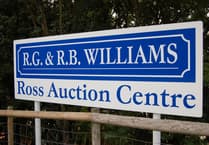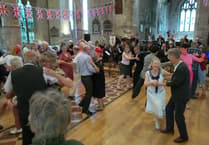THE owner of a 17th century listed rural cottage is appealing to the planning inspector after his bid for an extension was turned down.
Forest Council planners rejected the plan to replace a modern conservatory and utility room with a larger garden room at the timber-framed Monks Spout Cottage in May Hill near Ross-on-Wye last April.
And the owners of the Grade II-listed former farmhouse, whose grounds have been opened to the public as part of the National Gardens Scheme, are now calling on the inspector to overturn the decision and award costs against the council.
Council conservation adviser David Haigh originally told planners the proposed design, scale, detailing and materials would “cause unacceptable harm” to the “modest cottage”, which was originally a timber-framed two-bay building which had been “substantially enlarged by extensions to either end”.
“The current proposals seek to erect further significant extensions…” he added, “(and) they fail to preserve the special character of this modest timber-framed but much extended cottage.”
Mr Haigh also said that while there were glazed and lean-to additions on the site of the proposed extension, their impact was less because they were more lightweight in design and similar in scale.
Planners were told that the isolated countryside home, which includes the Monks Spout Spring and pond, is accessed by a track which forms part of the Wysis Way and is largely enclosed by large trees, hedging and planting.
The appeal against the refusal to give planning permission and listed building consent says the single storey proposals “are sympathetic to the historic and architectural interest of Monks Spout Cottage”.
It adds that they would “not have a harmful impact on the setting of the asset and would provide a high-quality replacement to the existing modern structures of the garden room and utility area”.
The replacement would be a “high-quality oak framed and glazed extension” it adds, and the demolition of the existing extension dating back some 16 to 20 years would “not result in the loss of historic fabric or elements which are of architectural interest”.
“The scheme is sensitive, reversible and of a high quality responding to the traditional character of the designated asset,” it says, while no neighbours would be affected by it.
Applying for costs against the council, it claims conservation opinions are “subjective, and their own heritage consultant had provided a detailed analysis of why the development would be “a positive addition and would not harm the designated heritage asset”.





Comments
This article has no comments yet. Be the first to leave a comment.